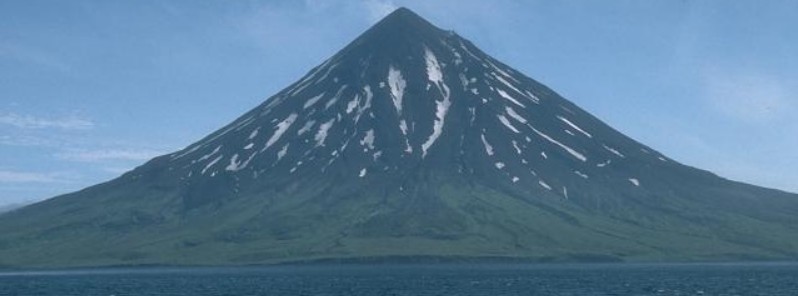Moderate eruption detected at Cleveland volcano, Alaska

A moderate, 2-minute-long eruption occurred at Cleveland volcano, Alaska beginning at 01:47 UTC on September 26, 2017.
The explosion was detected by seismic and infrasound (air pressure) sensors, the Alaska Volcano Observatory said 02:15 UTC today, adding that nothing has been observed in satellite data so far.
The Aviation Color Code/Alert Level remains at Orange/Watch.
Cleveland volcano is not monitored with a full real-time seismic network and this inhibits AVO's ability to detect unrest that may lead to future activity. "We are able to detect explosive activity using infrasound and limited seismic instruments on the island," they noted.
A somewhat similar explosion, lasting 1 minute was detected on August 22, 2017. Minor degassing from the summit was observed in satellite and webcam images during August 20 and 21. Elevated surface temperatures were identified in satellite data between August 17 and 21.
Geological summary
Beautifully symmetrical Mount Cleveland stratovolcano is situated at the western end of the uninhabited, dumbbell-shaped Chuginadak Island. It lies SE across Carlisle Pass strait from Carlisle volcano and NE across Chuginadak Pass strait from Herbert volcano.
Cleveland is joined to the rest of Chuginadak Island by a low isthmus. The 1730-m-high (5 675 feet) Mount Cleveland is the highest of the Islands of the Four Mountains group and is one of the most active of the Aleutian Islands. The native name for Mount Cleveland, Chuginadak, refers to the Aleut goddess of fire, who was thought to reside on the volcano.
Numerous large lava flows descend the steep-sided flanks. It is possible that some 18th-to-19th century eruptions attributed to Carlisle should be ascribed to Cleveland (Miller et al., 1998).
In 1944 Cleveland produced the only known fatality from an Aleutian eruption. Recent eruptions have been characterized by short-lived explosive ash emissions, at times accompanied by lava fountaining and lava flows down the flanks. (GVP)
Featured image: Mount Cleveland, Alaska. Credit: Michelle Harbin, 1994 (courtesy of Alaska Volcano Observatory, U.S. Geological Survey).

Commenting rules and guidelines
We value the thoughts and opinions of our readers and welcome healthy discussions on our website. In order to maintain a respectful and positive community, we ask that all commenters follow these rules.